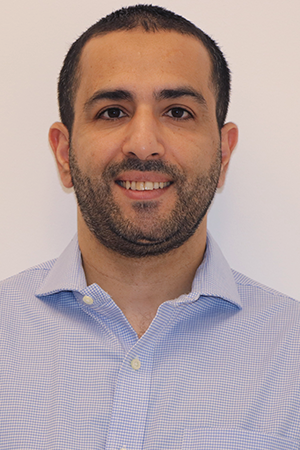High-resolution high-throughput CryoEM
The High-Resolution High-Throughput CryoEM core is used for high-resolution structure determination of proteins that have already been screened at other facilities.
The facility provides state-of-the-art high-resolution imaging that can extend resolution from 4 to 6 Å to 2 to 4 Å. It does not provide an advantage for obtaining structures at less than 4 Å resolution, and it is not suitable for screening samples.
We facilitate high-resolution and high-throughput data collection for single particle electron cryomicroscopy of proteins and protein complexes. These data are collected with the ultimate goal of determining three-dimensional structures of protein and contributing to the development of drugs.
High-resolution high-throughput CryoEM
The High-Resolution High-Throughput CryoEM core is used for high-resolution structure determination of proteins that have already been screened at other facilities.
The facility provides state-of-the-art high-resolution imaging that can extend resolution from 4 to 6 Å to 2 to 4 Å. It does not provide an advantage for obtaining structures at less than 4 Å resolution, and it is not suitable for screening samples.
We house high-end microscopes with high-resolution and high-throughput data using cryo-electron microscopy single particle analysis, with the ultimate goal of producing three-dimensional structures of proteins to understand their function, and contribute to developing drugs that interact with it.
Fees
| Service | Rate per day |
|---|---|
| Internal users (SickKids/U of T Medicine/UHN/LTRI) with funding more than $150K external funding | $785 (*) |
| Internal users (SickKids/U of T Medicine/UHN/LTRI) with funding less than $150K external funding | $535 (*) |
| External academic user | $2,035 |
| External industry user | $6,035 |
| Consumables | Rate per day (*) |
|---|---|
| One Autogrid (**) | $40 |
| Liquid nitrogen / day | $40 |
* Price decreases after 10 days
** A minimum of four autogrids are required for data collection
Interested in our services?
The Nanoscale Biomedical Imaging Facility (NBIF) is a core facility at The Hospital for Sick Children (SickKids) Research Institute. Please review the SickKids Core Facility Terms and Conditions (PDF) before submitting a service request.
Data Storage and Handling:
• Please provide a hard drive or LTO magnetic tape with sufficient space to save data prior to starting data collection.
• Raw data will be stored on the Krios server for approximately two weeks (space permitting) and automatically deleted without user notification.
• CryoSPARC Live projects from data collection will be stored for only 24 hours.
Acknowledgment:
By using the Titan Krios, you agree that in publication you will acknowledge “the Toronto High-Resolution High Throughput cryo-EM facility, supported by the Canada Foundation for Innovation and Ontario Research Fund” (verbatim for tracking purposes).
Submission Instructions:
Please provide the following information in a single PDF file (<20 MB) to john.rubinstein@utoronto.ca. Please CC the Principal Investigator who will pay the bill for microscope use. Once approved, applications will be forwarded to facility staff for data collection scheduling.
Section A:
• User name:
• Name of Principal Investigator responsible for billing:
• Primary Institution of Principal Investigator (SickKids, UHN, UofT, LTRI, Other):
• Institution of user (required):
Section B:
• Describe where/how initial screening was done (Microscope, camera, pixel size, exposure, and exposure rate):
• Describe how initial processing was done (Software, preprocessing details, particle picking, classification, refinement):
For samples screened with a FEG microscopes (e.g. Glacios, Tundra):
• The exact grids that were screened should be loaded for data collection.
• Please provide the following information:
- A representative micrograph (from one of the grids being provided) showing the typical particle distribution.
- Ratio of micrographs used: collected in the final map with CTF fit resolution better than 5 Å.
- Number of particles image used for the final map.
- Average number of particles image per micrograph included in the final map.
- Please attach a CTF fit distribution plot from screening dataset, a preliminary 3D map with FSC plot (masked and corrected), an orientation distribution plot, and a 3DFSC plot with cFAR score. ResLog plots can also be informative and may be requested if there are indications that the 3D map cannot be refined to high-resolution.
For samples screened with a non-FEG microscope (e.g. Talos L120C):
• Screening with a non-FEG microscope will only be accepted in special cases and where a FEG microscope is not available to the PI.
• Please provide the following information:
- A micrograph representative of the average particle distribution.
- 2D class averages and a low-resolution 3D map, if available.
For samples screened with non-autoloader microscopes (e.g. Talos L120C, TF20):
• If an autoloader microscope was not used for screening, please provide four grids prepared at the same time and under the same conditions as the screened grid.
Section C:
• Does the sample contain material from primary human cells (Yes/No)?
• If yes, provide the REB approval letter.
Team


Publications
- Courbon GM et al, EMBO J, doi: 10.15252/embj.2023113687 (2023)
- Di Trani JM et al, Proc Natl Acad Sci U S A, doi: 10.1073/pnas.2307093120 (2023)
- Wang H et al, Curr Opin Struct Biol, doi: 10.1016/j.sbi.2023.102592 (2023)
- Burn Aschner C et al, Sci Transl Med, doi: 10.1126/scitranslmed.adf4549 (2023)
- Liu RJY et al, J Biol Chem, doi: 10.1016/j.jbc.2023.104718 (2023)
- Liang Y et al, Proc Natl Acad Sci U S A, doi: 10.1073/pnas.2214949120 (2023)
- Xiao zheng Dou et al, Chemistry, DOI: 10.1002/chem.202300262 (2023)
- Wang H et al, Proc Natl Acad Sci U S A, doi: 10.1073/pnas.2217181120 (2023)
- Liang Y et al, Biochem Soc Trans, doi: 10.1042/BST20220611 (2023)
- Hasan SMN et al, Nat Commun, doi: 10.1038/s41467-023-39266-y (2023)
- Sarah C. Bickers et al, bioRxiv 2023.04.21.537812 (2023)
- Duc Minh Nguyen et al, bioRxiv 2023.09.20.558662 (2023)
- Morizumi T et al, Nat Commun, doi: 10.1038/s41467-023-40041-2 (2023)
- Kucharska I et al, PLoS Pathog, doi: 10.1371/journal.ppat.1010999 (2022)
- Tan YZ et al, Structure, doi: 10.1016/j.str.2022.07.006 (2022)
- Di Trani JM et al, Proc Natl Acad Sci U S A, doi: 10.1073/pnas.2205228119 (2022)
- Tan YZ et al, Life Sci Alliance, doi: 10.26508/lsa.202201527 (2022)
- Courbon GM et al, Front Microbiol, doi: 10.3389/fmicb.2022.864006 (2022)
- Vasanthakumar T et al, Nat Struct Mol Biol, doi: 10.1038/s41594-022-00757-z (2022)
- Guo H et al, Nat Commun, doi: 10.1038/s41467-022-29893-2 (2022)
- Keon KA et al, ACS Chem Biol, doi: 10.1021/acschembio.1c00894 (2022)
- Maxson ME et al, J Cell Biol, doi: 10.1083/jcb.202107174 (2022)
- Kucharska I et al, Elife, doi: 10.7554/eLife.72908 (2022)
- Moe A et al, Structure, doi: 10.1016/j.str.2021.11.008 (2022)
- Reisman BJ et al, Nat Chem Biol, doi: 10.1038/s41589-021-00900-9(2022)
- Harkness RW et al, Proc Natl Acad Sci U S A, doi: 10.1073/pnas.2109732118 (2021)
- McCallum M et al, Structure, doi: 10.1016/j.str.2020.11.019 (2021)
- Yanofsky DJ et al, Elife, 10:e71959 doi: 10.7554/eLife.71959 (2021)
- Miersch S et al, J Mol Biol, 433(19) doi: 10.1016/j.jmb.2021.167177 (2021)
- Di Trani JM et al, Structure, doi: 10.1016/j.str.2021.08.006 (2021)
- Rujas E et al, Nat Commun, 12(1):3661 doi: 10.1038/s41467-021-23825-2 (2021)
- Bickers SC et al, Proc Natl Acad Sci U S A, doi: 10.1073/pnas.2025853118 (2021)
- Yu C et al, Nat Commun, 12(1):3007 doi: 10.1038/s41467-021-23338-y (2021)
- Gorelik A et al, Sci Adv, 7(20) doi: 10.1126/sciadv.abf4155 (2021)
- Moe A et al, Proc Natl Acad Sci U S A, 118(11) doi: 10.1073/pnas.2021157118 (2021)
- Soroor F et al, Mol Biol Cell, 32(3):289-300. doi: 10.1091/mbc.E20-06-0398 (2021)
- Guo H et al, Nature, 589(7840):143-147 doi: 10.1038/s41586-020-3004-3 (2021)
- Lou JW et al, Commun Biol, doi: 10.1038/s42003-020-0997-y (2020)
- Ripstein ZA et al, J Am Chem Soc, doi: 10.1021/jacs.0c09474 (2020)
- Kucharska I et al, Elife, doi: 10.7554/eLife.59018 (2020)
- Tan YZ et al, Acta Crystallogr D Struct Biol, doi: 10.1107/S2059798320012474 (2020)
- Iga Kucharska et al, bioRxiv, doi: https://doi.org/10.1101/2020.06.02.131110 (2020)
- Yong Zi Tan et al, bioRxiv, doi: https://doi.org/10.1101/2020.05.03.075366 (2020)
- Hui Guo et al, bioRxiv, doi: https://doi.org/10.1101/2020.08.06.225375 (2020)
- Conicella AE et al, PNAS, volume 117, no 42, pages 26226-26236 (2020)
- Guo H et al, IUCrJ, volume7, no 5, pages 860-869 (2020)
- Huang R et al, Chem. Int. Ed. doi:10.1002/anie.202009767 (2020)
- Lee H et al, Cell, volume 182, no 2, pages 345-356 (2020)
- Abbas YM et al, Science, volume 367, no 6483, pages 1240-1246 (2020)
- Vahidi S et al, PNAS. volume 117, no 11, pages 5895-5906 (2020)
- Vasanthakumar T et al, Trends Biochem Sci, volume 45, no 4, pages 295-307 (2020)
- Ripstein ZA et al, eLife. 9:e52158. DOI: 10.7554/eLife.52158 (2020)
- Rubinstein JL et al, Acta Crystallogr D Struct Biol, v 75, no 12, p 1063-1070 (2019)
- McCallum M et al, Nat Commun, 10 (1):5198 (2019)
- Li Z, Tomlinson AC et al, Elife. 8: e51230 DOI: 10.7554/eLife.51230 (2019)
- Lou JW et al, Sci Rep. 9(1):12987 (2019)
- Lai LTF et al, Autophagy, DOI: 10.1080/15548627.2019.1639300 (2019)
- Guo H et al, eLife, 8:e43128 DOI: 10.7554/eLife.43128 (2019)
- Lou JW et al, bioRxiv 636167; doi: https://doi.org/10.1101/636167 (2019)
- Huang R et al, PNAS, volume 116, no 1, pages 158-167 (2019)
- Vasanthakumar T et al, PNAS, volume 116, no 15, pages 7272-7277 (2019)
Contact us
For questions or more information about our services, please contact Dr. Samir Benlekbir at sb@sickkids.ca.
